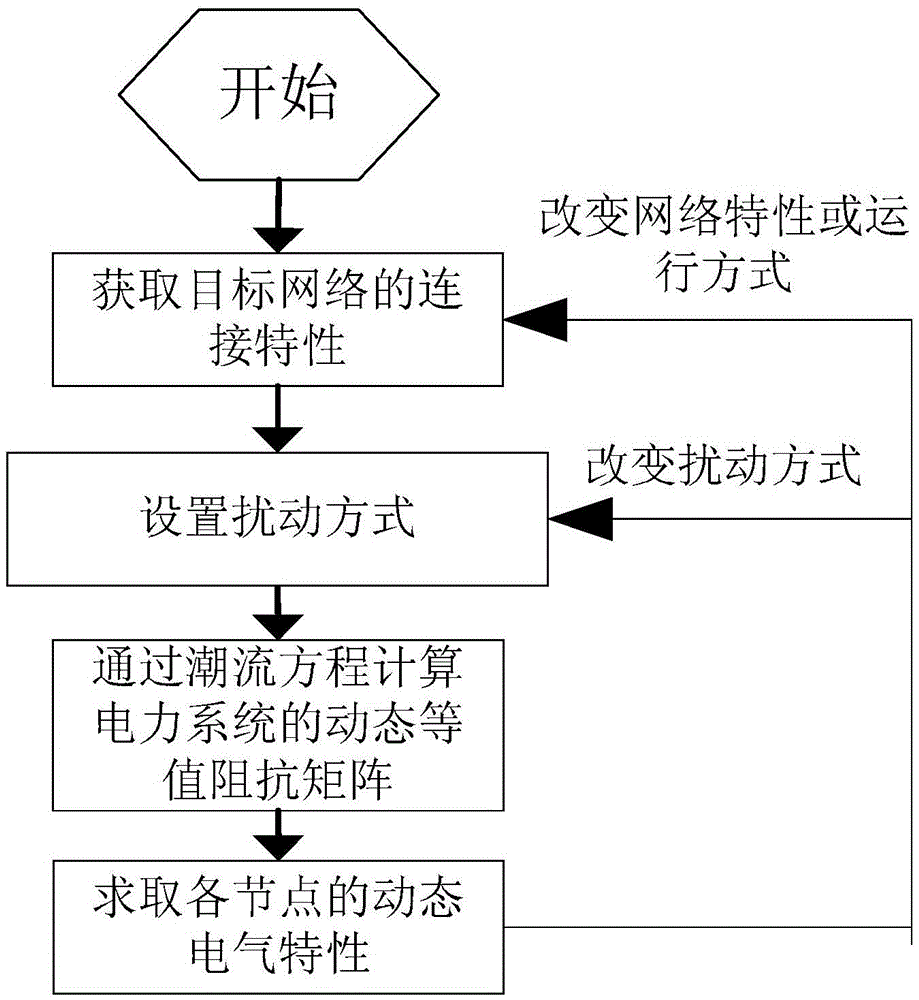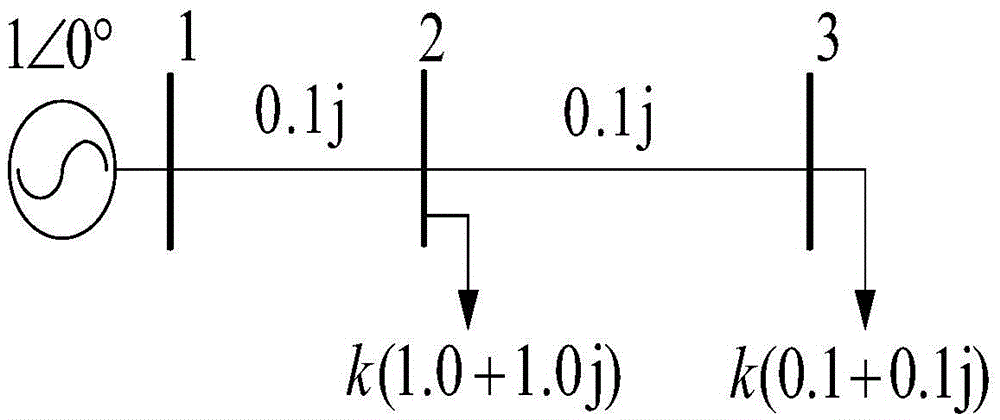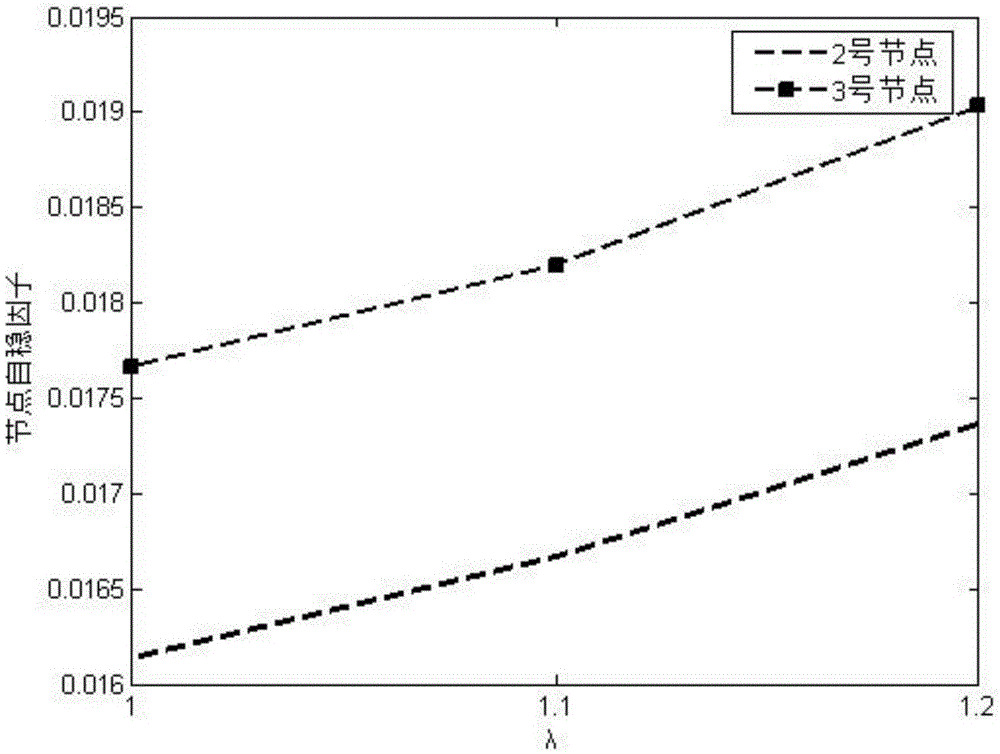Dynamic impedance based stability characteristic estimation method of power system
A power system stabilization, power system technology, applied in information technology support systems, electrical components, circuit devices, etc., can solve problems such as the inability to fully quantify the importance of dynamic electrical characteristics
- Summary
- Abstract
- Description
- Claims
- Application Information
AI Technical Summary
Problems solved by technology
Method used
Image
Examples
Embodiment 1
[0076] Through the simulation of a 3-node simple chain system, a method for evaluating the stability characteristics of a power system based on dynamic impedance is described, including the following steps:
[0077] Step 1: In a 3-node system, obtain the network connection characteristics at the time of analysis. Specific data such as figure 2 As shown in , the perturbation method adopts the synchronous power growth perturbation.
[0078] Step 2: Set the synchronous power growth disturbance of the whole network, and calculate the entire power system based on PSASP, and obtain the power flow data at some moments as follows:
[0079]
[0080] Calculate the dynamic equivalent impedance matrix of the system at some time points:
[0081] When t=1:
[0082] Z d y n - 1 / 1 = ...
Embodiment 2
[0091] By simulating the IEEE39 system, a method for evaluating the stability characteristics of power systems based on dynamic impedance is described, including the following steps:
[0092] Step 1: In the IEEE39 node system, obtain the network connection characteristics at the time of analysis. Internet connection such as Figure 5 As shown, the network parameters are shown in the table below, and the disturbance method adopts the synchronous power increase disturbance.
[0093]
[0094]
[0095] Step 2: Set the synchronous power growth disturbance of the whole network, calculate the whole system based on PSASP, and obtain the power flow data at some times as follows (taking load nodes as an example):
[0096] When t=0.79
[0097]
[0098] When t=0.8
[0099]
[0100]
[0101] When t=0.89
[0102]
[0103] When t=0.9
[0104]
[0105]
[0106] When t=0.99
[0107]
[0108] When t=1
[0109]
[0110] From the power flow calculation, the dy...
Embodiment 3
[0124] Through the simulation of the actual operating system in a province in central China, a method for evaluating the stability characteristics of power systems based on dynamic impedance is described, including the following steps:
[0125] Step 1: In this system, the network connection characteristics at the time of analysis are obtained. The main grid structure is as Figure 8 As shown in , some main parameters are shown in the table below, and the disturbance method adopts the synchronous power increase disturbance.
[0126]
[0127]
[0128] Step 2: Set the synchronous power growth disturbance of the entire network, calculate the entire power system based on PSASP, and obtain the power flow data of some nodes at each time as follows:
[0129] When t=0.99
[0130]
[0131]
[0132] When t=1
[0133]
[0134] When t=1.09
[0135]
[0136] When t=1.1
[0137]
[0138] When t=1.19
[0139]
[0140] When t=1.2
[0141]
[0142] The dynamic ...
PUM
 Login to View More
Login to View More Abstract
Description
Claims
Application Information
 Login to View More
Login to View More - R&D
- Intellectual Property
- Life Sciences
- Materials
- Tech Scout
- Unparalleled Data Quality
- Higher Quality Content
- 60% Fewer Hallucinations
Browse by: Latest US Patents, China's latest patents, Technical Efficacy Thesaurus, Application Domain, Technology Topic, Popular Technical Reports.
© 2025 PatSnap. All rights reserved.Legal|Privacy policy|Modern Slavery Act Transparency Statement|Sitemap|About US| Contact US: help@patsnap.com



